This is a transcribed and modified interview done with two players who started the game at two very different points in the game’s history. The focus of this interview is to observe the opinions and ideas of players who have observed the game at different parts of the game’s lifespan and how they feel about the game both in its past and its current state.
As an introduction, we have Yuiko and Sukiyaki.
Yuiko: I began card games in 2003 with Magic the Gathering until 2010. During the year of 2012, I began my journey in Weiss Schwarz and have been playing ever since. Along the way, I have picked up and dropped several card games including Cardfight Vanguard, Pokemon, Magic the Gathering, Battle Spirits, Victory Spark, and Precious Memories. I have been a long time enjoyer of card games but currently only play Weiss Schwarz and One Piece TCG.
Sukiyaki: I started Weiss Schwarz back in late 2022 and started going to locals while becoming more engrossed in the more competitive aspect of it. Previously, I have only been engrossed in the digital Shadowverse game and Hearthstone. While having dropped Hearthstone fairly early on after a year or so, I have been keeping up and playing Shadowverse since 2017. Just recently, In terms of physical card games, I have been mainly engaged with Digimon, Pokemon, and Magic the Gathering. Weiss Schwarz was rather unique among the mentioned, with a plethora of different titles and franchises making it very compelling me.
Shoyu: When did you two start the game?
Yuiko: I started in 2012. The most recent release at the time was the first set of Madoka Magica. I also remember that some Da Capo set had also recently released. Da Capo was quite a powerhouse during that time, having tools that many other sets did not have.
Shoyu: Interesting, but did that give Da Capo a significant advantage over other series?
Yuiko: In some ways yes, but it wasn’t overly oppressive. The biggest difference I would say comparing Da Capo to sets released during that time was that Da Capo was comparatively more consistent. Da Capo was especially good at playing the long game, outlasting its opponents. Compared to now, where the game is more about playing footsies with your opponent in the late game and where pushing damage is such a large priority, the game was more about stalling out in the early game and preventing players from reaching their level one power spike.
Level one was where players would be really getting their advantage and making their big swing moves. Finishers, compared to now, were not as powerful. They were overly complex and over-costed for a mediocre effect.
Shoyu: I didn’t play during that time. I started just before the Nisekoi meta. From what I recall, the game back then was more of a heal loop meta.
Yuiko: Madoka was infamous as being one of the top tier sets for doing so. Da Capo was another bigger set that was quite strong.
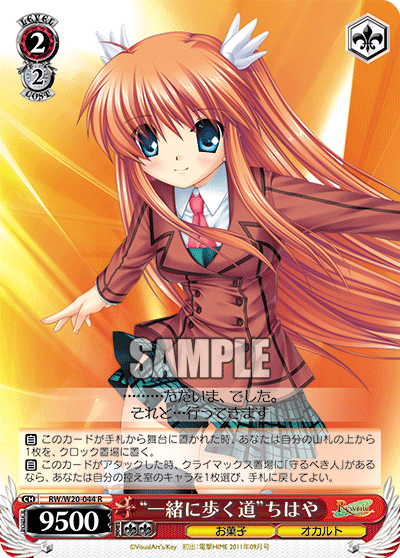
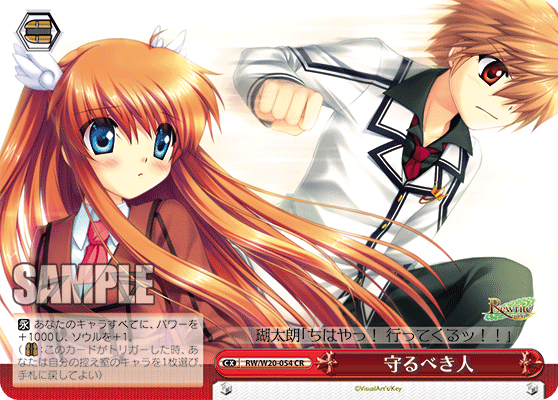
Shoyu: I remember facing Rewrite back in the day with 2/2 Chihaya walls.
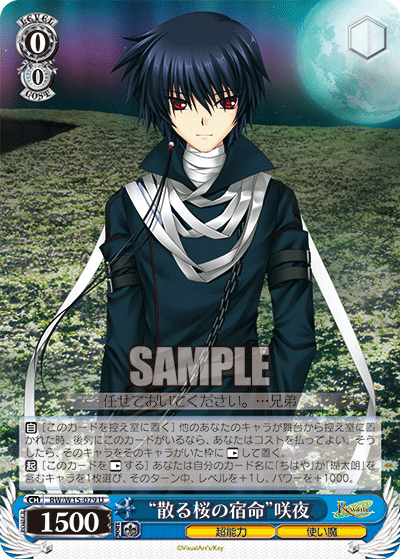
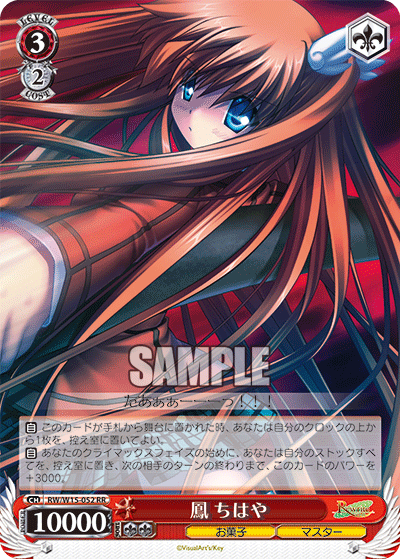
Yuiko: Yes, that combined with the Sakuya Pina profile was also quite strong, finishing you off with telephone pole Chihaya.
Shoyu: I feel like the game then back then was either wall-to-wall battles or looking to slam two soul and pushing for the damage game.
Yuiko: Pretty much. There were very few filtering tools compared to now. Do keep in mind that decks couldn’t exactly push a lot of damage without the use of a climax. There was very little deck manipulation, hand sculpting, and none of these more recent luxuries that are considered staples nowadays.
Shoyu: I remember sets having a drop search was considered to be phenomenal.
Yuiko: Yes. A deck having a drop search was very significant. Otherwise, for the most part, you’d be looking to try and pray to the heavens and whatever RNG god exists to draw your pieces.
Shoyu: I know brainstorms have always existed since the beginning of the game.
Yuiko: Yes, they were a big thing because they were one of the only consistent mill cards in each series. Brainstorms also had a colour identity back then such as blue for draw, red for salvage, green would grab from clock, etc.
Shoyu: Sets were not equally balanced in power either by any means, right? Say like Psycho-Pass and the sets around it.
Yuiko: That’s true. But when you popped off with Psycho-Pass, you really did pop off.
Shoyu: In general, there really weren’t that many filters in the old game. In addition, there were not many advantage combos, and if there were, they would have some sort of hard condition.
Yuiko: Yes, many of the combos were reliant on reversing or had a hard pay one cost to use their ability. Most of which were the latter. Also, the climaxes for these combos were quite random. Compared to the modern standard of 1k1s, the climaxes were quite diverse such as blind stock top deck soul, draw one + three soul to a single character… The list goes on.

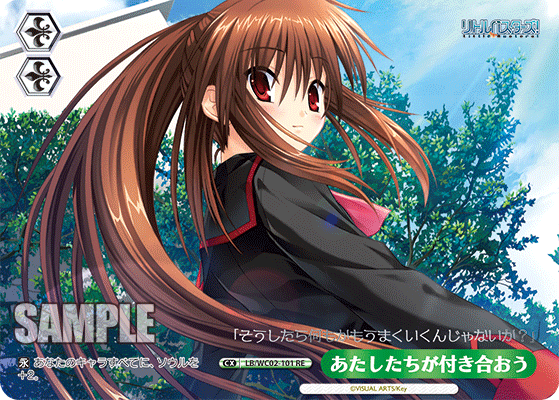
Shoyu: Just before I joined the game, I remember seeing and learning about one of the strongest combos at the time which was Rin from Little Busters because she had the ability to gain advantage without having to reverse or pay cost. It wasn’t the best combo because the combo was restrictive in what you could gain for advantage.
Yuiko: Yes, but the strength wasn’t exactly what it got you, but the fact that it got you hand for free.
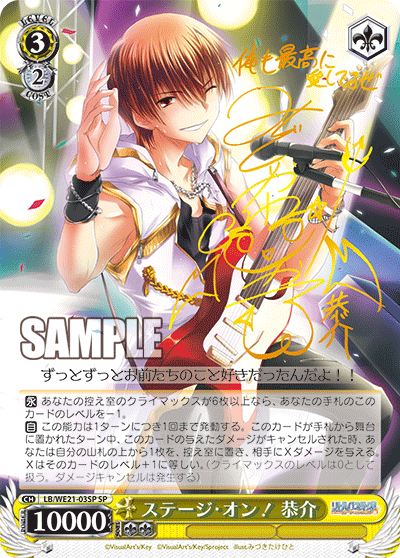
Shoyu: I also remember Kyousuke on the guitar being one of the stronger finishers back then too.
Yuiko: You mean the early play Musashi.
Shoyu: This was a Musashi that came out early if you had six or less cards in your deck. In all honesty, you wouldn’t really be playing it as an early play for the most part. So let’s move on to when you first started the game. But before we do that, Yuiko, what was your first deck?
Yuiko: It was Nanoha. 12 packs of As and 7 packs of Strikers. Threw it all together, and that was my deck.
Shoyu: Do you remember the locals then?
Yuiko: It was Madoka, D.C., Disgaea TD, and Milky Holmes.
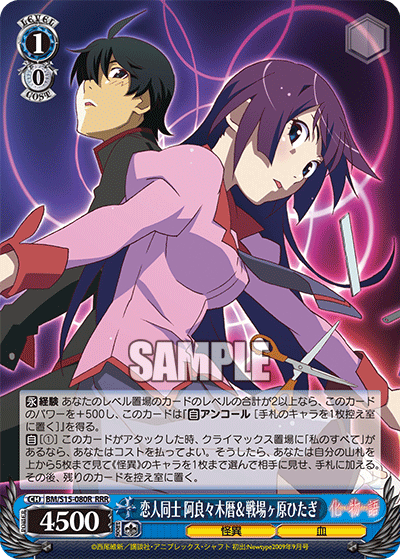
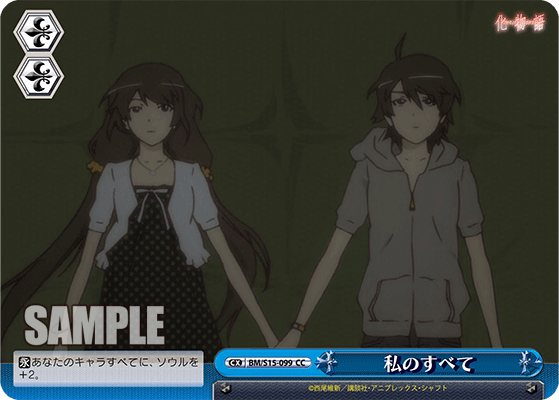
Shoyu: I started around when Nisekoi came out, 2014? My first set was Bakemonogatari. I didn’t know what I was really doing, but I remember my first deck was the R/G/B deck with the 2soul Lovers combo. I also remember buying the 3/2 Hitagis from the U.S. and selling the deck two months later. And then, I bought Illya.


I started in a strange sort of era. Half of the decks were more like vanilla piles. I remember also seeing my friend’s Rider deck from Fate. But this only really lasted about a month or two. Following that came Kantai Collection, Nisekoi, etc,. The game fundamentally changed then with more consistent combos and powerful comboless finishers.
There was also Marika.

Yuiko: It’s still kind of crazy to think that Marika got past testing. This card made a consistent nine attacks back in 2014. That’s crazy to consider when most decks already struggled to get five attacks.
Shoyu: Like, you look at that now, and you’d probably shrug it off as most decks just do that nowadays anyway.
Yuiko: I mean these days, Marika is just okay. But that’s still kind of crazy to consider as Marika is already over ten years old.
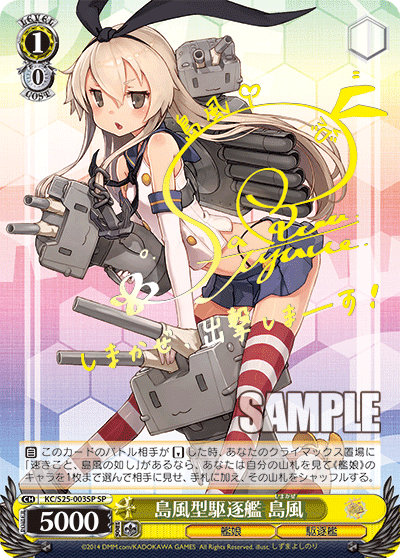
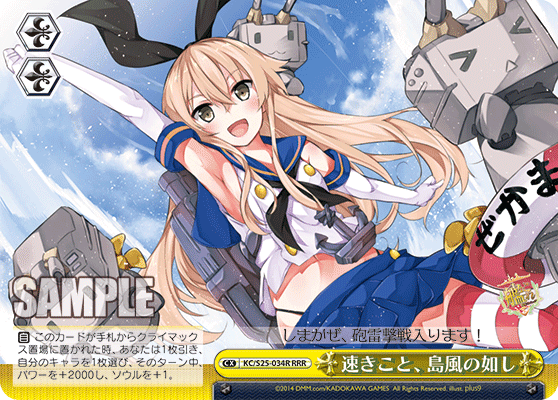
Shoyu: When I started, the game was going through dramatic changes. The game became a lot less vanilla and a more firm structure for deck designs started to become formed. Core profiles were getting introduced. Decks also started becoming more homogenized as well with the same deck cores with one or two slight differences. Everything felt like Shimakaze and friends.
Cinderella Girls was also a very powerful series. I think, even to this day, many sets kind of wished they had some of the profiles that series has. That being said, there was also a lot of prevalent anti-meta cards in the game thanks to Kantai.
Yuiko: Anti-heal hit very hard. The fact was many sets still kind of relied on heal-looping and could not afford to pay the stock costs. Back then, there were not many stock charging combos. You would get three a turn for three swings and that was it.
Shoyu: I feel Cinderella Girls very much defined what was and became the standardized deck list. Cinderella Girls had a stable game plan and concrete structure with very few flex slots and a large amount of staple filter cards. Moving onto your turn, Sukiyaki, tell us about your experience.
Sukiyaki: I started around the English release of Danmachi. But my first interaction with Weiss as a whole was with a Re:Zero trial deck. I played purely for the love of the Re:Zero series and didn’t really think much about the game. But in 2022, I decided to maybe put a bit more thought into the game. I remember visiting the locals scene for the first time, and it was during the peak of standby dominance. I think the most recently released set in English was Mushoku Tensei.
Shoyu: Ahh, yes, standby was still relatively new then. It first came out with Bang Dream!
Yuiko: It was not really a combo and more of a random promotional card. People didn’t originally capitalize upon standby’s potential. It wasn’t really a thing originally to run 2/2 large bodies with the standby triggers. Furthermore, standby was only limited to four a set up until a certain point.
Shoyu: I consider Mushoku Tensei to have been the peak of standby. Mushoku forcibly raised the power requirements on many combos, ushering a change in game design to accommodate standby. A short time ago, I made an article about the transition of the game towards a more Kanata-esque format, where the focus is more about getting a snowballing advantage during the mid game with strong early play profiles. What do you think?
Yuiko: I do think there is some truth to that statement, but I am getting mixed messages from Bushiroad. They are also printing some of these very high cost finishers with powerful finishing abilities. I think deck design has kind of backed itself into a corner and caused many modern decks to homogenize into the same cookie cutter template.

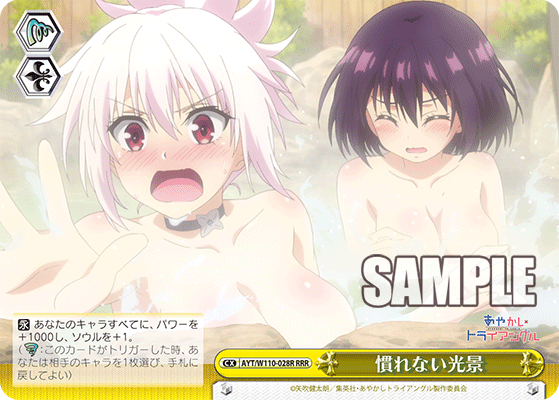
Shoyu: Speaking of which, I spoke with a friend earlier about flavour in the card game. One example I use is that of the eight wind Ayakashi deck where Matsuri uses his wind ninja powers alongside his friends. I mean, the thematic piece of that deck being that it is eight wind is cute.
Yuiko: I mean, the flavour is there, but it can be a bit more implicit than before. You have to kind of look a little deeper and put a bit of creativity into it. This is partially stemmed from all the overloading of similar effects in the game on cards.
Shoyu: That being said, have you kind of noticed that turns between games are kind of extending a little longer now. I kind of attribute it to increased costs on finishers and somewhat weaker finishing abilities. I think the biggest changes in more modern designs come from heavy resource costs that do need to be paid. I also think that in the current format, new decks don’t really stand a chance. In the current format, it feels like decks that play a more roulette based finish (chance based) are performing much better than decks that have a flat damage output due to the efficiency of their finishers. Of course we’ll have to see following the upcoming ban list.
Yuiko: I mean, we are still sitting on the Icy Tail hype train.
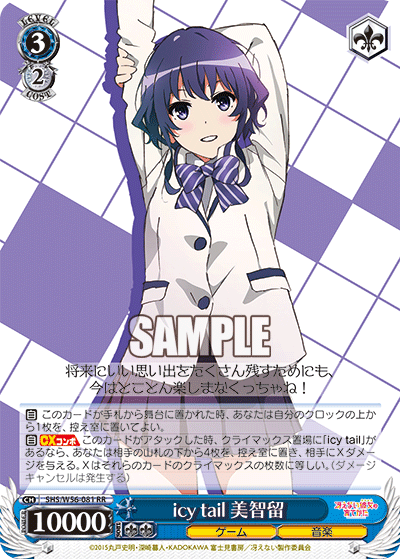
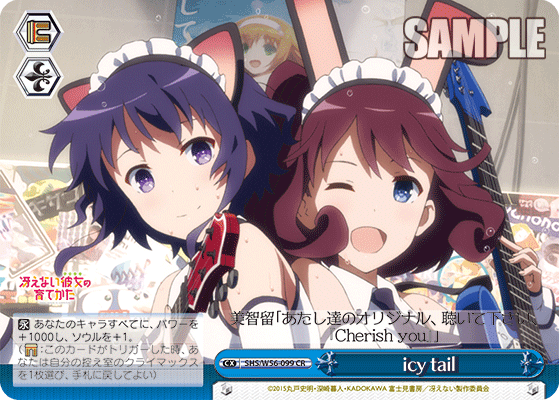
Shoyu: Well, the current Icy Tail format has a couple of issues compared to the original from Saekano. Firstly, damage isn’t a single instance. Damage is dealt for each individual climax milled rather than the combined total of climaxes milled per instance. Secondly, the reach for these combos have expanded much more as these combos mill more cards. Lastly, the number of instances that these combos deal have become rather egregious. It’s kind of insane how some of these combos can straight up kill you with a single card.
And another thing to note is that with the modern filters and advantage engines, these modern finishers are overly consistent in getting their effects off.
Sukiyaki: There’s also the consideration that it’s a bit of an arms race in the early game with series competing with who has the more powerful utility profiles. Level zeros are starting to fulfill roles they would traditionally not be doing. Additional text is being added to cards that had no reason of having them in the first place. One other concept to consider is that of the diminishing player turn counts with games lasting around three to four turns (we have a friend who keeps track of this). Most players rarely even see the second half of their second deck or sometimes barely manage to get to their second deck.
Shoyu: I will also say that with level zero combos, given how difficult it is to try and arrange your pieces to hand, the current pacing of game with level zero combos can push one player highly ahead in advantage while also putting the other player severely behind. For instance, going second and slamming a combo with three cards on field can put your opponent at level two in a poor deck state with nothing they can do to fix it. And even if the game can equalize in the end, it’s a miserable experience.
One other topic to dive into is the idea of counter-play in its modern state. Now, anti-cards such as anti-heal and anti-salvage have always been miserable to play against. Now, one other prevalent issue is using counters to play around your opponent’s stuff. The problem is that, say, if they were on standby, your opponent was getting extra field for free. You have to lose hand and field (Adachi) to deal with their advantage while they go neutral at worst.
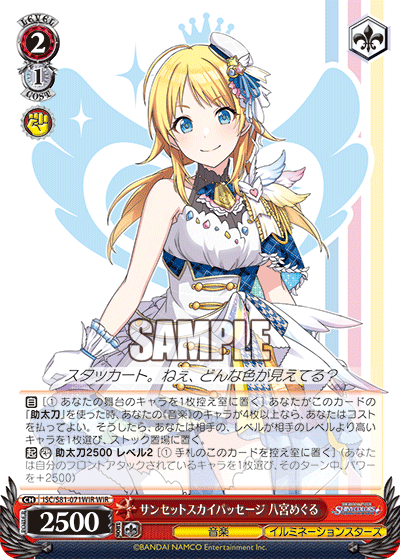
I do think Bushiroad is making some changes. Some of these more niche interactive cards are getting some better abilities. For instance, flicker cards may be getting some other filtering abilities as well. Take, for instance, Shiny Colours’ Meguru counter which is an anti-change counter. Traditionally, anti-change counters are expensive with good reason, but Meguru does something different. Her costs are reduced, but in exchange, you grant your opponent an advantage while still removing a different point of advantage.
Yuiko: So cards that remove threats on your opponent’s side while giving them some slight return.
Shoyu: Exactly. So let’s move on. I should have done this at the start, but what are your favourite sets and cards?
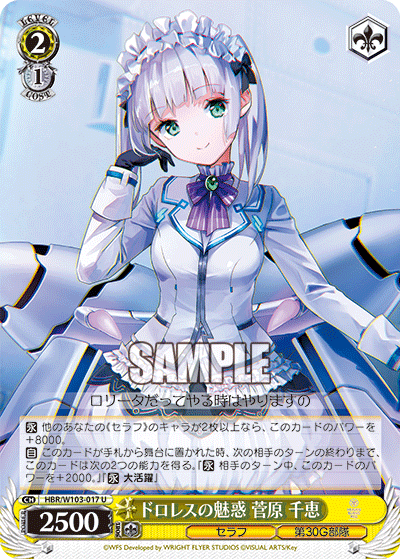
Sukiyaki: My set of choice would have to be Heaven Burns Red. My favourite card is the 2/1 Chie bodyguard that I run in my eight wind deck. It synergizes nicely with the wind combo and forces interaction without being too overly oppressive, which is something I like.

Yuiko: My favourite series is D_Cide Traumerei due to the connection between the story in the mobile game and the translation of concepts into mechanics in Weiss. My favourite card is the 1/1 Ariya “Adachi” because the card effect is very versatile in removing board pieces with its change package.
Shoyu: What do you all think about alternative formats? Do you think Weiss could use some? I’m personally not a fan of time machine formats in general because they just push players into running the unbanned meta stuff from that time period. Furthermore, I think players over-glorify the “good old days” with their nostalgic lenses.
Yuiko: There has been some unbanned formats where it’s just neo-standard but without ban-lists. In all honesty, those are just miserable to play in as well. You have the same problem with time machine formats where the over-dominating designs are back at the top of play.
Sukiyaki: What about some sort of limited draft format? It would be kind of fun to see like a pure trial deck event where players could only fiddle with cards from a certain pool of cards.
Shoyu: They’ve actually done that at some point, but these were like one or two off events. Speaking of product, I don’t think they’ve ever really topped the releases of the power-up sets for Kill la Kill, Haruhi, and a smaller handful of series. The value was great for players and breathed some new life into these older series. That being said, I’m quite happy with the recent released trial deck+ supply set for Hololive.
I’m getting a bit of feeling of product fatigue. They’ve been releasing sets far too often, and I’m struggling as is to keep up with articles for the most recently released sets.
Yuiko: I can feel the same way. But I think they’re looking into recently spreading out product releases more so throughout the year.
Shoyu: There’s been a lot happening with Weiss in the past few years. We also have Weiss reaching out to other regions with more language products for other regions which I think is a phenomenal thing. That being said, a local recently talked about the idea of restricting decks to a Japanese banlist if there is a mixed format. What do you think of that?
Yuiko: I do agree with that. I mean, what’s the point of a banlist if it is not adhered to. For example, I don’t play Overlord in English if there is a mixed tourney. It feels like I’m just skirting the banlist by doing so.
Shoyu: I can see that. I will say, I think you are right in terms of balance and having a more healthy tournament overall, but there are some more technical concerns. Having access to cards is one thing and then there’s the reality of excluding players as well.
Sukiyaki: I don’t think it’s that much of a concern. I believe as long as people can be included, that’s all that matters. If the community collectively agrees on it, then that’s fine. Players being excluded based on the banlist is not the ideal way to promote growth in the community.
Shoyu: Anyways, moving onto a banlist prediction for the upcoming restrictions talk soon. What do you think?
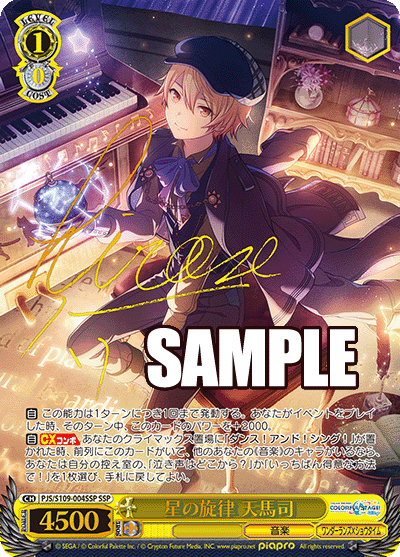
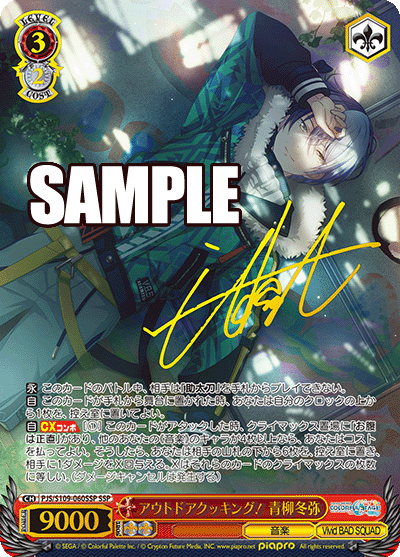
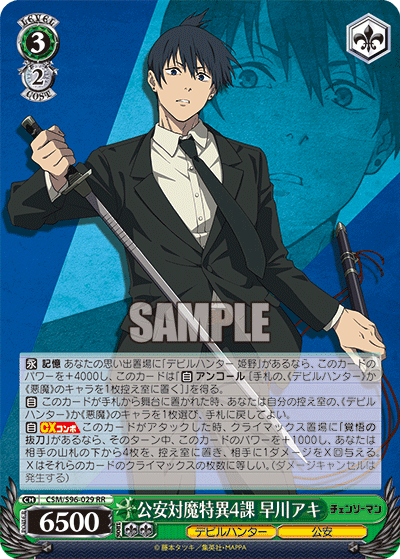
PJS/S109-060SSP-SSP アウトドアクッキング! 青柳冬弥 (center)
CSM/S96-029RR 公安対魔特異4課 早川アキ (right)
Yuiko: I think a potential limitation for Project Sekai with Touya and Tsukasa is pretty fair.
Shoyu: I think Touya might need to be limited to two as well just like Aki.
Yuiko: I disagree. I think the yellow shell is the penultimate issue. I think with just the removal of the yellow package, Touya is unlikely to be able to consistently use his combo as well. By forcing just these changes, I think that it’ll be fine as players will likely be pushed to play the on-theme finisher. And in comparison, the on-theme finishers are much less oppressive than Touya.
Shoyu: Let’s move on to Bunny Girl.
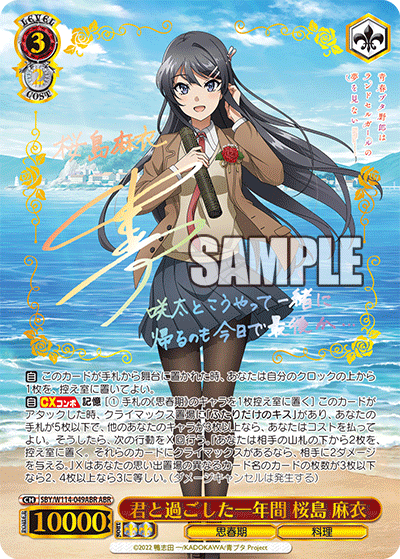

SBY/W114-075SR-RRR ふたりだけのキス (right)
Sukiyaki: Maybe keep Mai as a one/two-of?
Yuiko: A one-of is pretty painful. It feels like a pseudo-ban essentially.
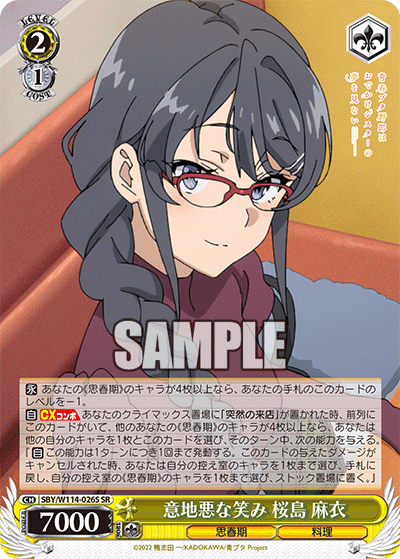
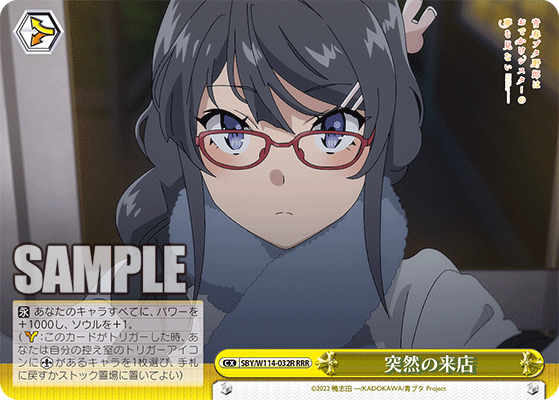
Shoyu: What about the 2/1 choice combo?
Yuiko: I do think that’s a consideration. Purely, the amount of damage inflicted by that card is too dangerous and punishing. That being said, one other topic I wanted to speak about was how Bushiroad approaches ban lists. It’s long been known that Bushiroad uses popularity as one of the key points to determine how to balance the series.
I think people are turning away from the choice/gate deck in order to protect it from it being potentially banned.
Shoyu: I can see that. But these kinds of on-cancel designs, especially if put out so early and also maintaining field are an issue as they possess the most powerful keyword in Weiss, soul. To put it bluntly, you can just dock your opponent to death in an instant in a poor deck state. Moving on to Uma…
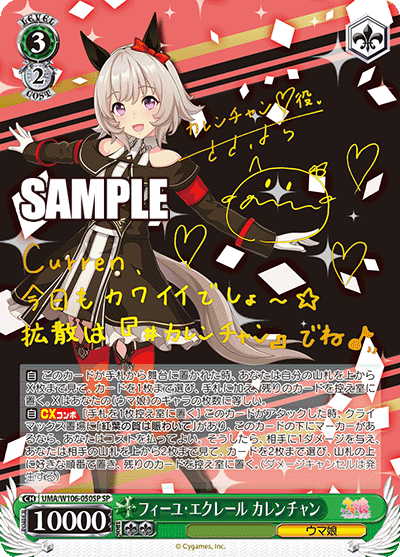

UMA/W106-T30R-RRR ジンクスに挑むお嬢様 サトノダイヤモンド (right)
Sukiyaki: As an avid Uma Musume player and fan, I think the most popular and successful deck with Satono and Curren is quite fair. The only problematic card you can point fingers at is Satono. It’s a one-card solution for everything. It mills the deck, gets advantage, and acts as a standard beater.
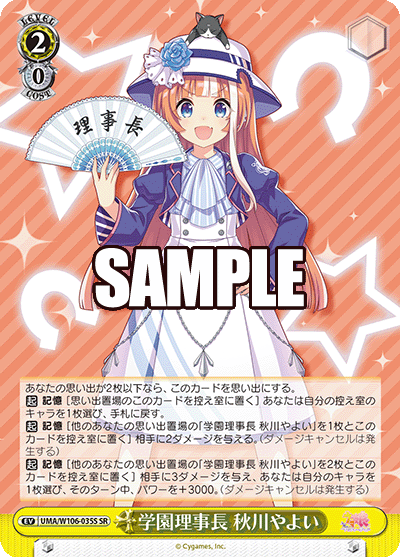
Shoyu: I think the irony of removing the 2/0 event actually makes the deck better. You increase the odds of Satono hitting targets and also reduces the need for an additional colour. I think it’s best to compare Satono’s role to that of Tsukasa’s from Project Sekai.
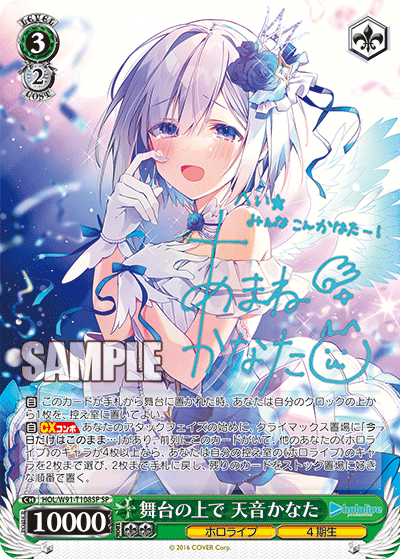
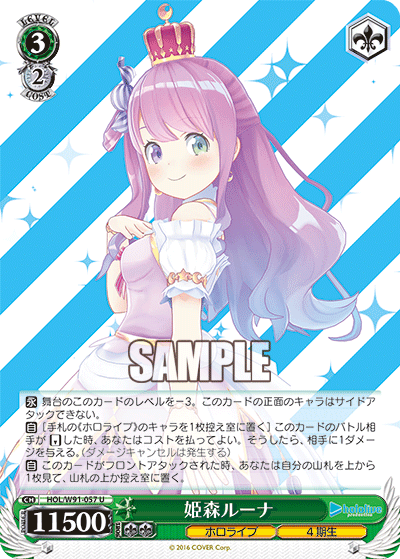
Yuiko: Hololive has been quite the point of contention for a while. The 3/2 Kanata and 3/2 Luna have been key points of discussion.
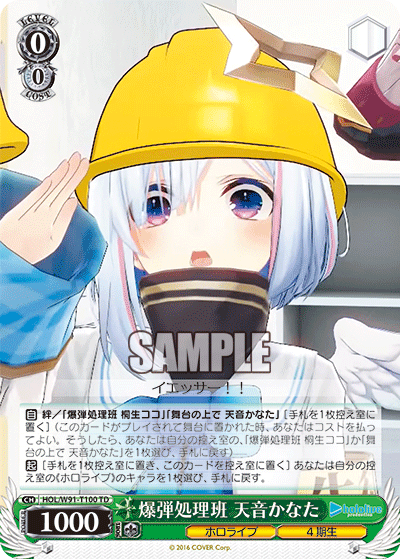
Sukiyaki: I feel that removing the helmet for Kanata is the key approach for that deck to feel less oppressive.
Yuiko: As we talked about before, Kanata and these super-advantage engine cards are unhealthy for the game, so I do really believe there needs to be some sort of change.
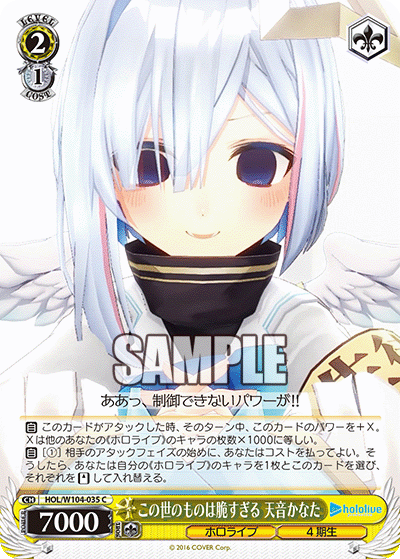
Shoyu: I do think restricting both the 2/1 Kanata and 3/2 Luna being played together will help make the deck more fair. But there are far more key issues that need to be discussed. The series offers far too many small filter cards that act as enablers. The utility is just too strong and too universal.
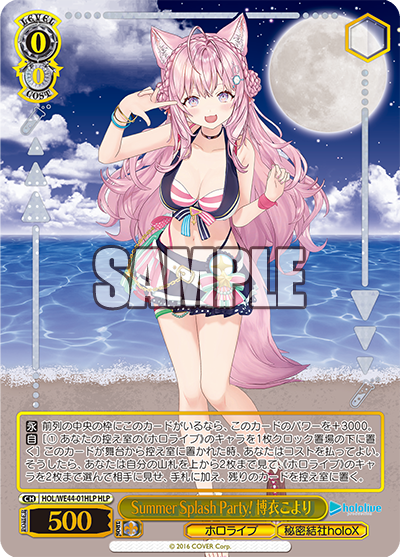
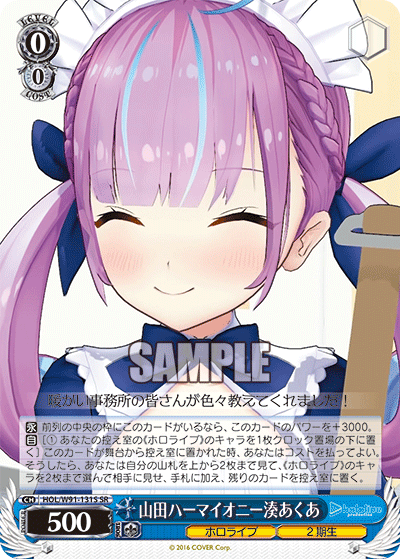
HOL/W91-131S-SR 山田ハーマイオニー湊あくあ (right)
I will say that I’m very happy with the new summer collection for Hololive. The set provides additional support for finishers and other cards in the original set. But once again, they’ve added more problems to the utility pool as well. For instance, there is the new 0/0 Koyuri which is essentially a 0/0 Aqua clone. I think they should have made it that 0/0 Koyuri would add characters from her specific generation only.
Moving onto Alice Gear Aegis, we have a rather unenjoyable deck to play against.
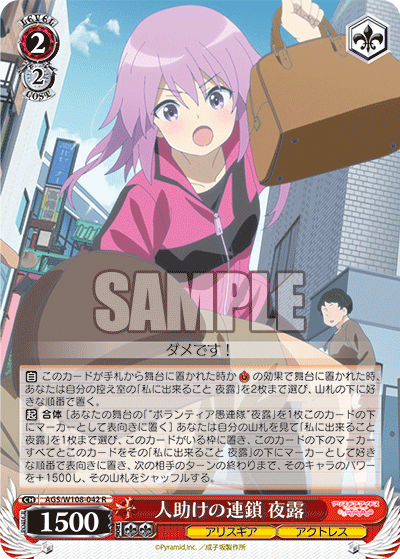
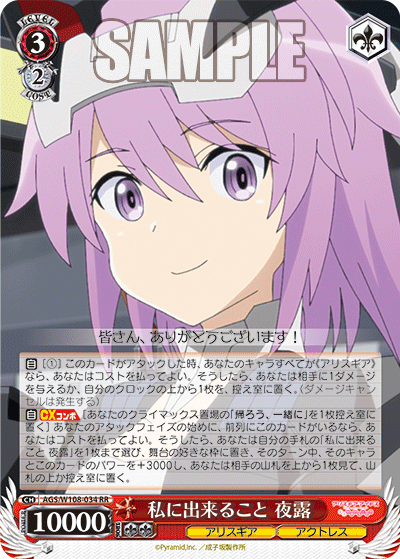
Sukiyaki: I think that banning the changer for 3/2 Yotsuyu will definitely make this deck more fair to play into.
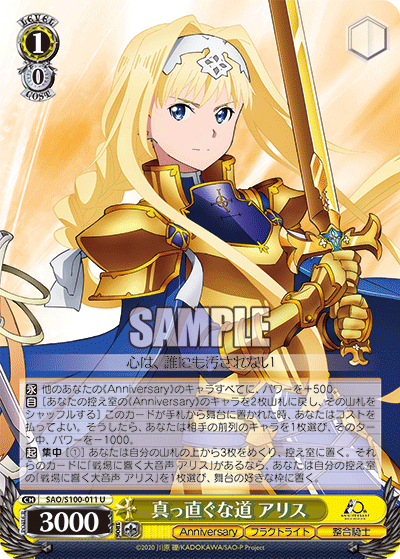
Yuiko: I agree. I think that maybe Yotsuyu should carry the Alice treatment in the ban list like the 1/0 brainstorm.
Shoyu: Okay, thanks for your input. Any closing notes?
Yuiko: I think Bushiroad has been pushing the envelope a little too much in regard to powercreep and trying out mechanics as of late. Designs such as Aqua with low opportunity costs and high rewards are far too strong.
Shoyu: I think other issues such as the increased number of damage instances, low cost opportunities, lack of resource attack, and low requirements are also prevalent.
Yuiko: I remember nuking my opponent’s entire board, and then the following turn, with just a single card and a bit of luck, he just chained out his entire board again like it was nothing.
Shoyu: What about locking your opponent from leveling?
Yuiko: Nowadays, it doesn’t mean much unless you lock them to X-4 or lower clock. It’s far too easy to force yourself to level with all the self-damage abilities and all the Riki profiles in the game.
Shoyu: I do think changes are coming though with newer sets carrying higher costs and stricter requirements will be make some changes to this. Well then, thank you for your time, Yuiko and Sukiyaki.